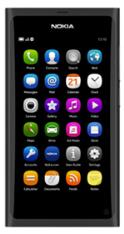The last couple of years have seen big changes across the mobile phone market. Smartphones have become the norm, screens are larger, phone cameras are adequate, Apps are essential and storage spaces are vast. Below we have included some of our predictions for what to expect with next year’s smartphones.
Is it a tablet or a smartphone?
It will be a fine line between phones and tablets as mobile screens get larger and tablets get smaller. We could see smartphone screens reaching 5-inches and 720p HD-resolution displays becoming the standard. We may see manufacturers begin to toy with the idea of bendable screens, an initiative which could be the beginning of unbreakable displays and foldable phones.
Photos worth printing
We may see camera resolutions as high as 16 megapixels, and while this doesn’t mean photos are of a higher quality, it does mean images may be snapped up large enough to make them worth printing and displaying on your wall just like in the old days.
4G-compatible devices
With both Optus and Telstra rolling out 4G networks, we’re going to need phones which can take advantage of the superfast internet speeds on offer. Telstra has quoted speeds from 2Mbps up to 40Mbps on their 4G network, which is apparently 25 times faster than speeds on their current 3G network. HTC, Samsung and Motorola are just some of the phone manufacturers with 4G-compatible mobiles already travelling to our shores.
Near-field communication
If manufacturers install near-field communication technologies into our smartphones, it could change the way we make payments, do multiplayer gaming, receive public information and sign in for appointments. Near-field communications works using magnetic induction to transmit information between two devices over a short physical space. So if you have yourself a Visa or Mastercard, instead of “waving” your card at the POS machine, you could be waving your smartphone instead.
